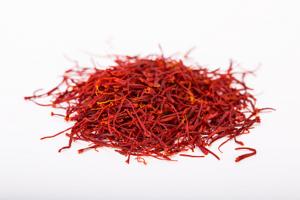Introduction
Pecan trees belong to the walnut family and are native to North America. They are primarily grown in the southern United States, but many people wonder how far north they can be successfully grown. In this article, we will explore how far north you can plant pecan trees and what factors determine their ability to thrive in different climates.
Climate Requirements for Pecan Trees
Pecan trees thrive in areas with hot summers and mild winters. They require a long growing season to produce a good crop of nuts, which typically takes around 200 days. The ideal temperature range for pecan trees is between 60 and 80 degrees Fahrenheit. They need at least 1 inch of water per week during the growing season, and the soil should be well-drained to prevent root rot.
The Impact of Climate on Pecan Trees
A colder climate can negatively impact the growth of pecan trees. The main issue is that the trees may not have the necessary growing season to produce large and healthy nuts, which is why they tend to do best in the southern United States where the growing season is longer. In addition, a harsh winter can cause damage to the tree, particularly when temperatures drop below 0 degrees Fahrenheit. The tree may also suffer from frost damage in the spring if temperatures drop below 28 degrees Fahrenheit during the budding stage.
Factors Determining Pecan Tree Growth
In addition to climate, other factors play a role in determining how well pecan trees grow in a particular area. Soil type and quality are critical, as pecan trees prefer deep, well-draining soils that are rich in organic matter. The pH of the soil should also be between 6.0 and 7.0, as alkaline soils can lead to a reduced crop and poor tree growth. Another factor to consider is air drainage, as pecan trees are susceptible to frost damage when planted in low-lying areas where cold air accumulates more easily.
Possible Locations for Planting Pecan Trees in Northern States
While pecan trees do best in the southern United States, there are still some areas in the northern states where they can be grown successfully. In general, these areas are located in the southwestern part of the state, where the climate is warmer and the growing season is longer. For example, in Michigan, pecan trees can be grown in the southern part of the state where temperatures remain above 0 degrees Fahrenheit in the winter. In New York, pecans can be grown as far north as Long Island, where the climate is mild and the growing season is long enough for the trees to produce nuts. It is also possible to plant pecan trees in Ohio, Pennsylvania, and other northern states, but the growing conditions may not be ideal, and the trees may not produce as large of a crop as those grown in the southern states.
Conclusion
In conclusion, pecan trees can be successfully grown in some areas of the northern states, but they do best in the southern United States where the climate is warmer and the growing season is longer. When deciding whether to plant pecan trees in a particular area, it is essential to consider factors such as climate, soil type, and air drainage to ensure that the trees have the best chance of thriving. With the right conditions, however, pecan trees can produce a delicious and nutritious crop of nuts in northern states that is enjoyed by many people.

 how many times do yo...
how many times do yo... how many planted tre...
how many planted tre... how many pine trees ...
how many pine trees ... how many pecan trees...
how many pecan trees... how many plants comp...
how many plants comp... how many plants can ...
how many plants can ... how many plants and ...
how many plants and ... how many pepper plan...
how many pepper plan...





























